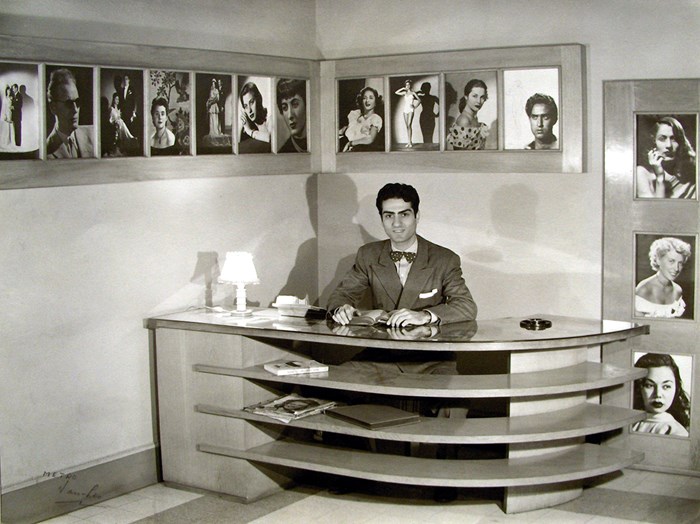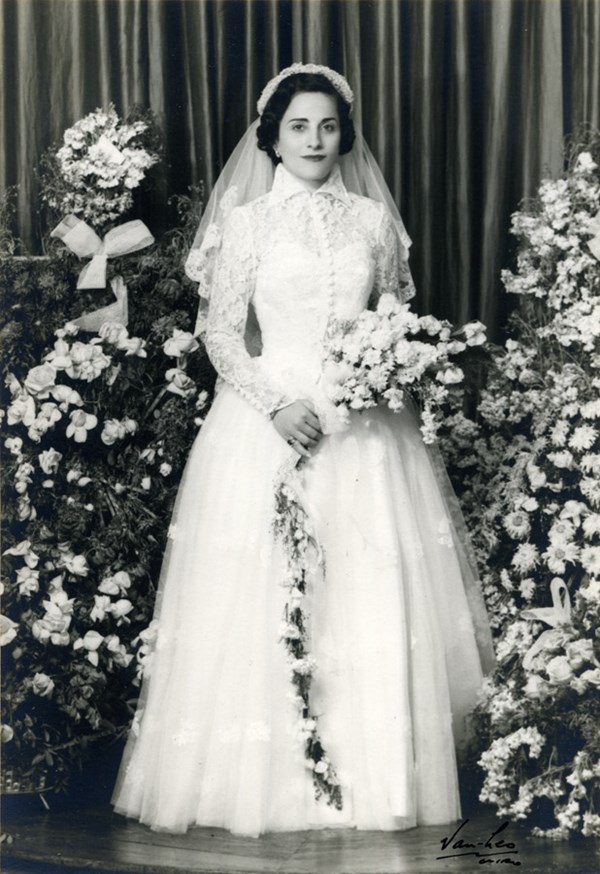
Van (Levon) Leo (Boyajian)
1921 - 2002
1940 - 1970s
For the past two decades, Van Leo’s photography has grown enormously in stature and is now considered one of the pivotal stages of photography’s development in Egypt. Leon Boyadjian was born into a middle-class Armenian family who had moved to Cairo in the early 1880s. He turned to photography quite early in his life after dropping out of American University of Cairo. At first, Leon worked as an apprentice to Artinian, the proprietor of Studio Venus, before opening up his first premises at his own house in 1941. He was helped by his older brother Angelo, who would go on to become a renowned photographer in his own right. In 1947, the Boyadjian brothers decided to separate and Leon opened his new premises at Studio Metro, located at 7 Fuad Street.(1) Changing his name to ‘Van Leo’, Boyadjian soon achieved popularity in Cairo’s vibrant artistic and bohemian scene. His portraits of Egyptian stars such as Omar Sharif and Loula Sedki were widely distributed in the press and through postcards, making him a well-known brand to an elite clientele. The combination of Hollywood-style glamour, romanticism, sentimentality with electric eroticism, gave Van Leo’s portraits a truly artistic dimension that went beyond the scope of studio portraiture. In fact, each sitter, be it a celebrity or an ordinary citizen was treated in the same way, with the photographer always aiming to find the suitable ‘vision’ for his sitter’s look. Indeed, everyone who came in through the studio’s doors could feel like a star for a moment. Thus each of Van Leo’s portraits is a brilliantly concocted theatrical mask that most likely had little to do with the actual sitter.
Alongside his commercial practice, Van Leo created an enormous body of experimental works. His corpus of self-portraits, created from his 20s to 40s is one of the largest of its kind in the world. This, now famous series, is a stunning gallery of self-reflexive, modernist photography through which the artist explored notions of identity, sexuality and photography itself. Each self-portrait represents a character inspired from films, theatre, crime novels, news and dreams. In their pastiche-like approach they predate Cindy Sherman’s ‘Untitled movie stills’ by some thirty years.
Working steadily through the Egyptian independence, cultural revolution, studio fires and the eventual decline of the Armenian-dominated field of studio portraiture, Van Leo finally closed his practice in 1998, bequeathing his huge archive to the American University of Cairo. Today, his work has come to define the image of a cosmopolitan, multicultural Egypt between the 1940s and 60s that is one of the most vibrant, complex and conflicted expressions of 20th century Middle Eastern modernity.
(1) See Maria Golia, Photography and Egypt, Reaktion books, London, pp108-112
Nationality
Egyptian, Armenian
Region
Egypt
City
Cairo
Studio
Van Leo
Activity
artistic, studio
Media
analogue photography
Bibliography
Maria Golia, Photography and Egypt, Reaktion books, London, pp108-112
Exhibitions
2011: Becoming Van Leo, Prince Clause Fund Gallery, Amsterdam, jul7-nov11
2015: Van Leo: the master photo-portraitist of Cairo, Sultan Gallery, Kuwait, jan20-feb12.
Collections
Arab Image Foundation, Beirut Library of American University of Cairo Lusadaran Armenian Photography Foundation, Yerevan
